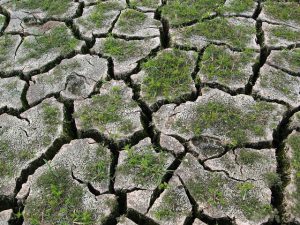Dry soil can reduce the lifespans of your trees and plants, especially if there is a drought and it is a prolonged dry period. It can be difficult and expensive to replace your trees, which is why they should be your primary focus – of course, they can also be dangerous if they dry out and die.
Droughts are common throughout the year, not just in the summer like some people think. So how can you help your trees to survive and thrive in times of drought? Here’s a primer:
4. Know the Symptoms
- Helps you to spot a tree in trouble
- Trees will often suffer at different speeds
- You should inspect your trees a few times a week in times of drought
By knowing the symptoms of trees that are impacted by drought, you will better be able to hone in the trees that actually need your support. In general, you want to look for wilted foliage, leaf scorch, yellowing, leaf dropping, or a sparse canopy, according to EDEN. You may also notice that there has been limited growth and poorly formed buds. This can be impacted for several seasons.
However, the most common symptom of a drought problem is that there is an invasion by pests. They will cause the trees to lose water and nutrients even quicker – and they are thirsty because they are impacted by the drought as well.
3. Water Trees Appropriately
- Active roots tend to be near the top of the soil
- Collect water or recycle it where you can
- Water the entire root zone
Of course, the biggest problem with a drought is that there just isn’t enough water to go around. The best thing you can do is collect any rainwater that we do get and use that to water your trees and planets. You can also use water from your hose or sprinkler, but try not to use any excess water. Another option is to collect water when you shower, just make sure that there aren’t any contaminants in the water.
When you do water, you want to do it in the morning and you want to ensure that the entire root zone gets watered.
According to Sunset Magazine, you want to “Make sure moisture reaches 12 to 18 inches deep. Approximately 90% of tree roots are in the top 12 inches of soil. Use a soil probe each time you water to ensure that the moisture has reached 12–18 inches.”
The best approach is slow, deep watering once a week or so for mature trees. If it is hotter (which is common when there is a drought) you may have to do it twice a week. If you have a new tree, you want to deeply water it every other day.
2. Keep Measuring the Soil Moisture
- Sometimes the soil holds water longer than it looks
- Other times, it can be dry and look wet
- You have to check deep down
During a drought, you want to ensure that the soil is dry before you actually water the tree. Since conservation is so important, you want to be vigilant. Some soil might be dryer than other soil. For example, trees planted on a hill might be drier because the water runs out of that soil faster than water on a level surface, according to the University of Massachusetts.
Sandy soils also tend to dry faster than a clay soil, so knowing the type of soil that you have can be extremely helpful. Another problem is that even if you do get a soaking rain, clay soils tend to be harder to penetrate than sandy soils.
After you do water the tree, make sure to come back a few hours later to ensure that the water was absorbed. Measure deep to ensure that there was penetration to the roots. You can also physically dig a 1-foot hole (be careful to avoid the roots) and check.
1. Prioritize Trees Over Grass
- Trees can be dangerous if they dry out
- Grass tends to recover more quickly
- Always be careful when using water
When there is a drought, of course, the best thing to do is conserve water as much as possible. However, you should not do so at the expense of your safety. Trees that are dry are more likely to fall over or lose limbs that can hit your home. Still, in the name of conservation, you have to be judicious about what you water and what you don’t. Grass is an extremely hardy thing and will come back to life quite quickly. Trees, on the other hand, can suffer years and years of damage from one dry spell.
According to the Morton Arboretum, “Water trees and shrubs during extremely dry soil conditions. If you have to choose, water your trees and not the grass since grass will turn green again when water is available. For water conservation, it is best to not water your lawn at all. Trees, on the other hand, will show subtle signs of drought, wilting or dropping leaves. However, they can be seriously injured or die without water.”
Try to water your trees first before you water anything else – and if you can, avoid using water on your grass. It might not look great, but it will help with conservation and allow you to ensure you have enough for what really matters. Remember that no one can predict when a drought will end.
If you are looking for a tree care professional in Redwood City, give Econo Tree Service a call today at (650) 200-2495. We will help you to better understand your trees and how to handle any watering, planting, pruning, or other tree issues that you may find – of course, we can also help you with other issues as well, including any seasonal tree care needs that you may have. We will provide you with the best possible tree service in the area, and provide you with real solutions that work.





